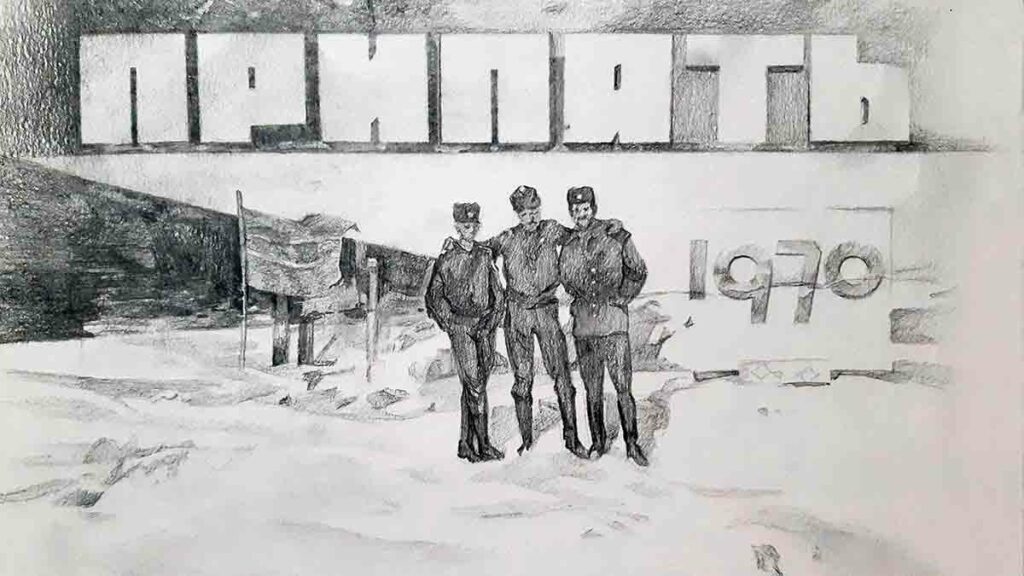
In 1989, the veil of official silence began to gradually subside in the country of victorious socialism, the USSR. It was the veil regarding the “secret” consequences of the Chernobyl disaster.
First of all, the reason for this was the activity of public organizations. They began to demand a solution to the environmental problems. These problems were accumulated in the country from the newly elected super parliament of the model of “Gorbachev’s perestroika”. They arose, among other things, as a result of the Chernobyl accident.
Some deputies of the first partially elected parliament began to actively oppose the concealment of information regarding the “Chernobyl consequences”. In particular, they are representatives of the districts close to the Chernobyl exclusion zone, both from the Ukrainian and Belarusian sides.
From the Ukrainian side, the first to take the blow was a literary critic from Zhitomir, Alla Yaroshinskaya. She worked in parliament. She represented the interests of people living 80 km from the Chernobyl nuclear power plant, in the village of Narodichi. It is one of the most affected by radioactive exposure due to the Chernobyl accident in 1986.
Yaroshinskaya’s public statements about the Narodichi were spoken everywhere. It was after the truly grandiose at that time in their openness and adherence to principles. And in the early summer of 1989, a government commission arrived in Narodichi. They were accompanied by the deputy chairman of the republican government and the party leadership of the region.
The KGB informed the first secretary of the Communist Party of the Ukrainian SSR, Vladimir Shcherbitsky, about the meeting of the scientific council on radiobiology of the USSR Academy of Sciences in Narodichi. About eight hundred people gathered on June 13 in the cultural center “Narodichi” to meet with scientists. Some in the audience called for strikes. This was the only effective way to force the authorities to finally move from recognizing problems to doing at least something to solve them.
There was little the KGB could do about such statements: the political situation was changing.
By the fall of 1989, not only Ukraine, but also neighboring Belarus, swept environmental protests against the communist government. In Belarus, the first mass demonstration took place on September 30 in Minsk.
Officials tried to stop the buses carrying people from the contaminated districts of the Gomel and Mogilev regions. It was to avoid them takig part in the strike. However, the officials but could not do so. The central government continued to deny the tragic consequences of the Chernobyl disaster, that is, to rehabilitate itself in the eyes of a huge number of people, including liquidators and displaced persons, it was no longer able to.
The Chernobyl accident caused the ecological and social disaster. Moreover, the unjustified secrecy of information, which was valuable, including for providing timely assistance to the affected population. It happened due to the concealment of the real facts of the causes and consequences of the most terrible technogenic catastrophe of the twentieth century. In a word, the government lost a monopoly on information and political trust.
The work of environmental headquarters and individual activists helped to shed the veil of mystery about the environmental consequences of the Chernobyl disaster. However, this was not enough for the ultimate goal of shutting down the Chernobyl and other nuclear power plants that used RBMK reactors.
Anti-nuclear sentiment grew stronger and continued to develop in Ukraine
In February 1990, the decision of the parliament, which was still under the control of the communists, was initiated. It provided for the closure of the Chernobyl nuclear power plant until 1995. Although the authorities took desperate steps to eliminate the Chernobyl topics from the political arena, they could not return their lost influence.
Among the most popular slogans of those years was the slogan that accused the Communist Party of the Chernobyl disaster: “Let the CPSU be at the Chernobyl nuclear power plant!” Three quarters of the postcards issued in Ukraine at that time talked about the Chernobyl accident and the environmental problems that arose after it.
In April 1990, on the eve of the fourth anniversary of the Chernobyl disaster, there were strikes in cities and villages near which nuclear power plants are located in Ukraine. About 5,000 people gathered in the small town of Netishin, near the Khmelnytsky nuclear power plant in western Ukraine. Also, about 3,000 people demonstrated in Rivne, in the neighboring region. They demanded to close the nuclear power plants in Khmelnytsky and Rivne, which were located about 300 kilometers away.
Workers from one of the local concrete production enterprises supported the strike in Netishin. Also, they stopped supplying concrete for the construction of a new unit at the station in Khmelnitsky.
These workers called on other workers to join their strike. KGB officers informed party officials in Kiev about the dangers of mass demonstrations in Netishyn. In particular, about the possible consequences if the authorities did not agree to close the Khmelnytsky nuclear power plant.
Ukrainian authorities were looking for a compromise
In the summer of 1990, the newly elected parliament introduced a five-year moratorium on the construction of new reactors on Ukrainian soil. They continued the trend started by its predecessor by the decision to close the Chernobyl nuclear power plant.
A special commission created to solve the problems associated with the Chernobyl disaster. In addition, they investigated the role of the authorities in hiding information about the danger caused by the explosion at the ChNPP. The main goals put forward by environmental activists have been achieved. Ahead was the difficult task of finding and mobilizing limited resources for the rehabilitation of people and territories affected by the disaster.
The political freedom was achieved, including under the flag of environmental patriotism. The shock wave of Chernobyl was the impetus that helped to destroy the very foundations of the Soviet Union.
